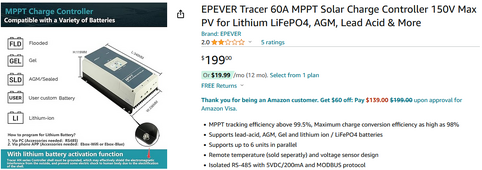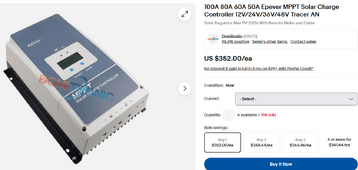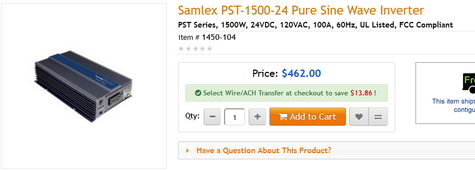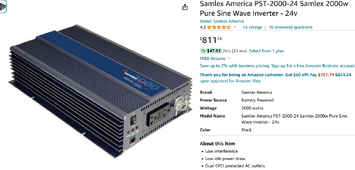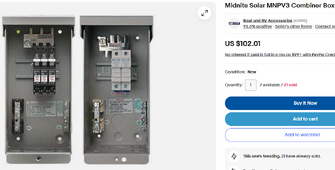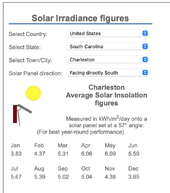Your controller is PWM, which means it just acts as on on/off switch to prevent over-charging. It does NOT transform the incoming solar voltage down to battery charging voltage like a MPPT controller will. With a Vmp of 31.4V, these panels are totally unsuitable for a 12V battery system. Voltage that high could potentially damage your batteries, but more likely, the resistance of the batteries will drag the operating voltage of the panels down to ~15V? That means your 265W panel becomes a 105W panel.
It would work reasonable well for charging a 24V battery bank, but each panel would need to be wired in parallel, not series, so you'll need copper wire thick enough to carry the relatively high current from the array to the controller. Assuming you might see as much as 32A potentially coming from the panels, you'll need at least 8 gauge wire to carry the load. 10 gauge is rated for 30A, and might be marginally acceptable, but you're pushing that wire close to or past it's limit.
Since you have a 12V inverter, you are making some poor choices here. 3000W is really above what is practical for 12V. Any chance you can sell it and purchase a 24V inverter instead? Sticking with 12V with what you've already bought is mostly a mistake.
First, four 12V batteries in parallel will be very hard to keep balanced. One battery will be always charged better than the rest, and one will always receive less current than the rest. If the manufacturer rates those batteries as being able to be wired in series, I would go with at least 24V.
If you decide you don't want to give up 12V, then get rid of that PWM controller and replace it with a MPPT controller. How many of those 265W panels do you actually have? If it's an even number, you could wire them in series pairs, for a Vmp of ~63V. A entry-level MPPT controller is Epever's Tracer 4210AN, which can handle two of those panels in series. With four of those panels, you could wire them 2S2P into the controller. That means two parallel strings of two panels in series.
With three panels, it's a bit more difficult. Three in series would give you a Voc of ~116V, so you need a more expensive higher-voltage controller like the Tracer 6415AN or 8415AN. The 60A version is 200$ on Amazon right now.
So, you've got to make some choices now to fix your mistakes. Get rid of your cheap PWM controller and replace it with an MPPT, or replace your 12V inverter and go with a 24V version. The LiTime manufacturer states their battery can be wired in series, up to four, so you have the option of creating either a 24V or 48V system. If it was me, I'd try to get my money back and replace both the controller and the inverter with better choices.
